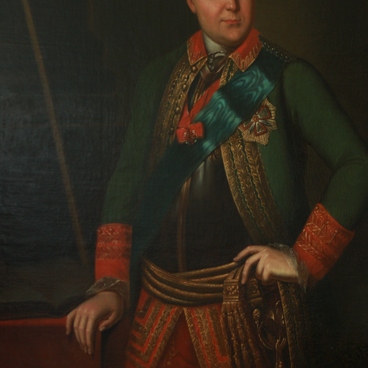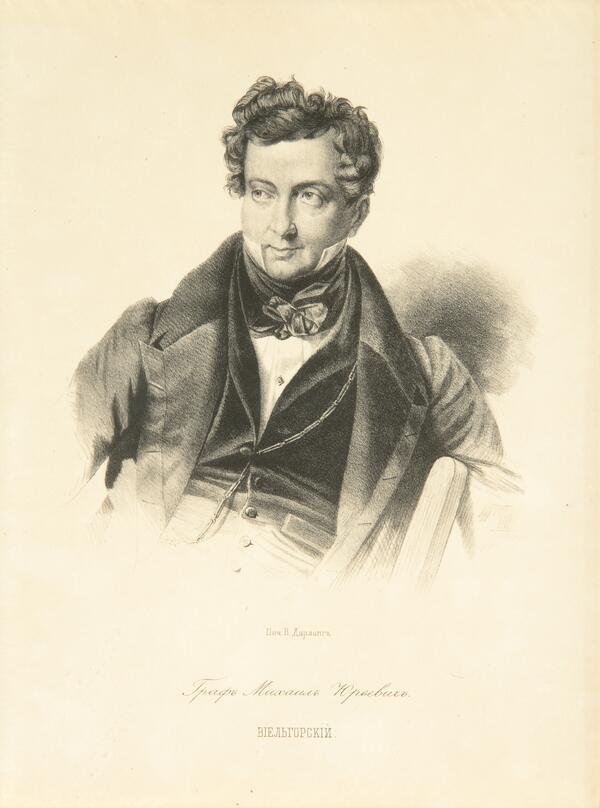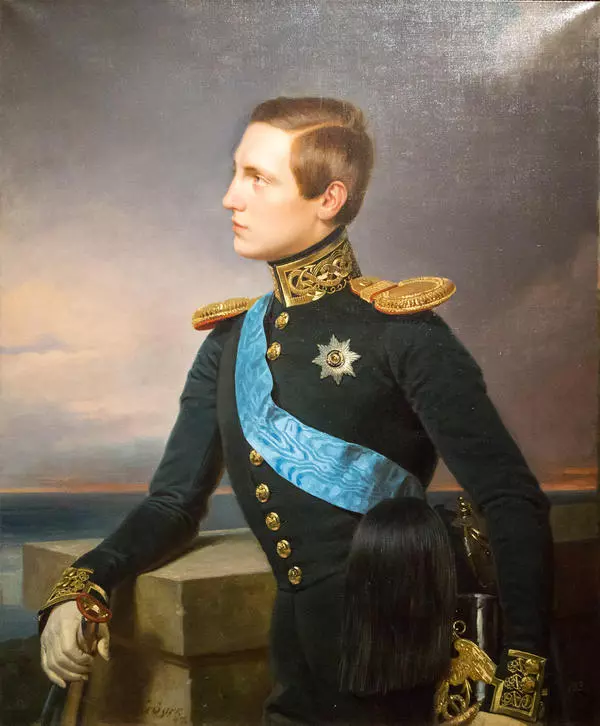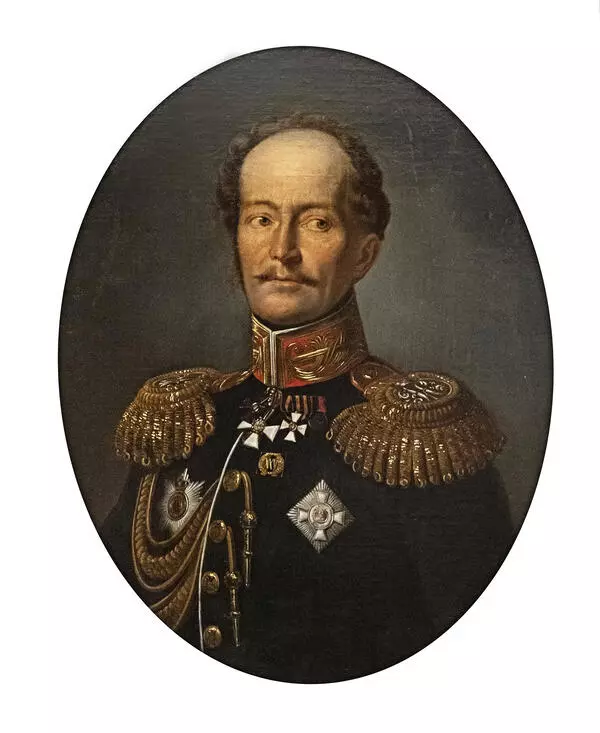In the first half of the 19th century, Count Mikhail Yurievich Vielgorsky (1794–1866), the most acclaimed man of musical art and gifted composer, posed for the fashionable in Russia portraitist Franz Krüger.
He himself served in the Ministries of Education and Internal Affairs, held court positions, but music remained the main passion in his life. He patronized not only Russian, but also European artists, musicians, composers. Many of them have performed in his St. Petersburg house - the largest creative center of the capital, the omphalos of the city’s musical life.
The Romantic poet Dmitry Venevitinov called Vielgorsky’s house ‘the academy of musical taste’. The count was also friends with many famous Russian writers: Nikolai Karamzin, Vasily Zhukovsky, Alexander Pushkin, Pyotr Vyazemsky, Nikolai Gogol.
Mikhail Vielgorsky knew Ludwig van Beethoven and was even among the first eight listeners on the first performing of the composer’s Pastoral Symphony. The count himself also wrote music and became the author of one of the first Russian symphonies.
His son-in-law, Vladimir Alexandrovich Sollogub, described the count as follows: “He… was an extraordinary person: a philosopher, critic, linguist, physician, theologian, hermeticist, an honorary member of all Masonic lodges, the soul of all societies, a family man, an epicurean, a courtier, a dignitary, musician, comrade, judge; he was a living encyclopedia of the deepest knowledge, an example of the most tender feelings and the most lusory mind”. Robert Schumann, in his turn, called the Count “the most ingenious of sciolists”.
Franz Krüger, the portrait’s author, studied at the Berlin Academy of Arts, but did not graduate. However, this did not become an obstacle for him - he gained popularity due to his incredible depictions of battle and hunting scenes. Krüger worked extensively at the Prussian and Russian imperial courts. In Russia, he was engaged in the creation of numerous portraits of the Imperial family members and other representatives of the nobility.
The graphic portrait of Mikhail Yuryevich Vielgorsky, created in the rare burnt sienna technique, perfectly conveys aristocratic features in the model’s appearance, and at the same time convincingly reveals the character and versatility of the personality. The good-natured, ironic look of the count, who has taken a relaxed pose, is directed to the side, a slight smile plays on his lips. The count seemed to freeze, listening attentively to the music.
He himself served in the Ministries of Education and Internal Affairs, held court positions, but music remained the main passion in his life. He patronized not only Russian, but also European artists, musicians, composers. Many of them have performed in his St. Petersburg house - the largest creative center of the capital, the omphalos of the city’s musical life.
The Romantic poet Dmitry Venevitinov called Vielgorsky’s house ‘the academy of musical taste’. The count was also friends with many famous Russian writers: Nikolai Karamzin, Vasily Zhukovsky, Alexander Pushkin, Pyotr Vyazemsky, Nikolai Gogol.
Mikhail Vielgorsky knew Ludwig van Beethoven and was even among the first eight listeners on the first performing of the composer’s Pastoral Symphony. The count himself also wrote music and became the author of one of the first Russian symphonies.
His son-in-law, Vladimir Alexandrovich Sollogub, described the count as follows: “He… was an extraordinary person: a philosopher, critic, linguist, physician, theologian, hermeticist, an honorary member of all Masonic lodges, the soul of all societies, a family man, an epicurean, a courtier, a dignitary, musician, comrade, judge; he was a living encyclopedia of the deepest knowledge, an example of the most tender feelings and the most lusory mind”. Robert Schumann, in his turn, called the Count “the most ingenious of sciolists”.
Franz Krüger, the portrait’s author, studied at the Berlin Academy of Arts, but did not graduate. However, this did not become an obstacle for him - he gained popularity due to his incredible depictions of battle and hunting scenes. Krüger worked extensively at the Prussian and Russian imperial courts. In Russia, he was engaged in the creation of numerous portraits of the Imperial family members and other representatives of the nobility.
The graphic portrait of Mikhail Yuryevich Vielgorsky, created in the rare burnt sienna technique, perfectly conveys aristocratic features in the model’s appearance, and at the same time convincingly reveals the character and versatility of the personality. The good-natured, ironic look of the count, who has taken a relaxed pose, is directed to the side, a slight smile plays on his lips. The count seemed to freeze, listening attentively to the music.








